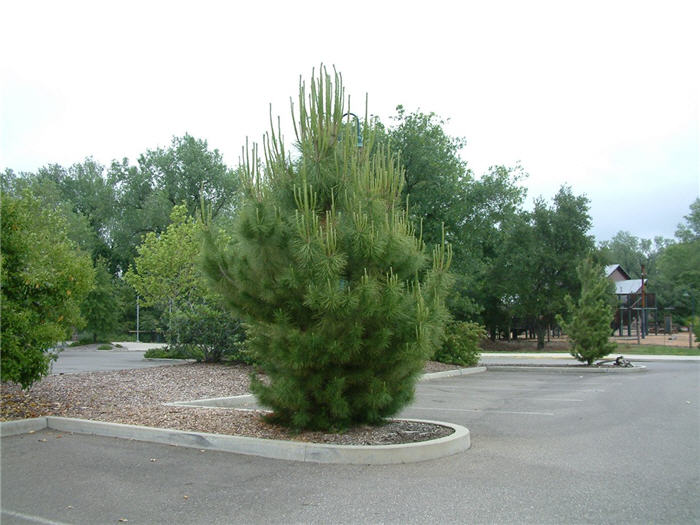| Botanical Name: Pinus thunbergii | |
| Common Name: Japanese Black Pine |

-
Anatomy
-
Culture
-
Design
Plant Type
Tree, Conifer
Height Range
12-25', 25-40', 40-60'
Flower Color
n/a
Flower Season
n/a
Leaf Color
Green, White
Bark Color
Grey
Fruit Color
Brown
Fruit Season
Fall
Sun
Full, Half
Water
Medium, High
Growth Rate
Moderate, Slow
Soil Type
Clay, Loam, Rocky
Soil Condition
Average, Rich, Well-drained
Soil pH
Acid, Neutral
Adverse Factors
n/a
Design Styles
Formal, Japanese, Woodland
Accenting Features
Silhouette, Specimen, Unusual Shape
Seasonal Interest
Winter, Spring, Summer, Fall
Location Uses
Background, Foundation
Special Uses
Screen
Attracts Wildlife
Birds
Information by: Stephanie Duer
Photographer: Acacia/George/Mullany
Photographer: Acacia/George/Mullany
-
Description
-
Notes
Japanese black pine is noted for its whitish terminal buds that provide interesting contrast with its dark green foliage. Though growing larger in optimum conditions, typically it is more often seen in the 20 to 60 feet tall and 12 to 20 feet wide. It is upright and rounded, becoming broad with age. Young foliage candles are upright. Oval, brown cones are less than 3 inches long. As the tree ages, bark turns dark purplish-gray and fissures into plates. Synonymous with P. thunbergiana.
Grow in fertile, medium moisture, well-drained soils in full sun. Tolerates some light afternoon shade and some drought. Salt tolerant.